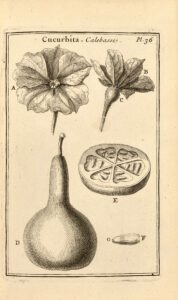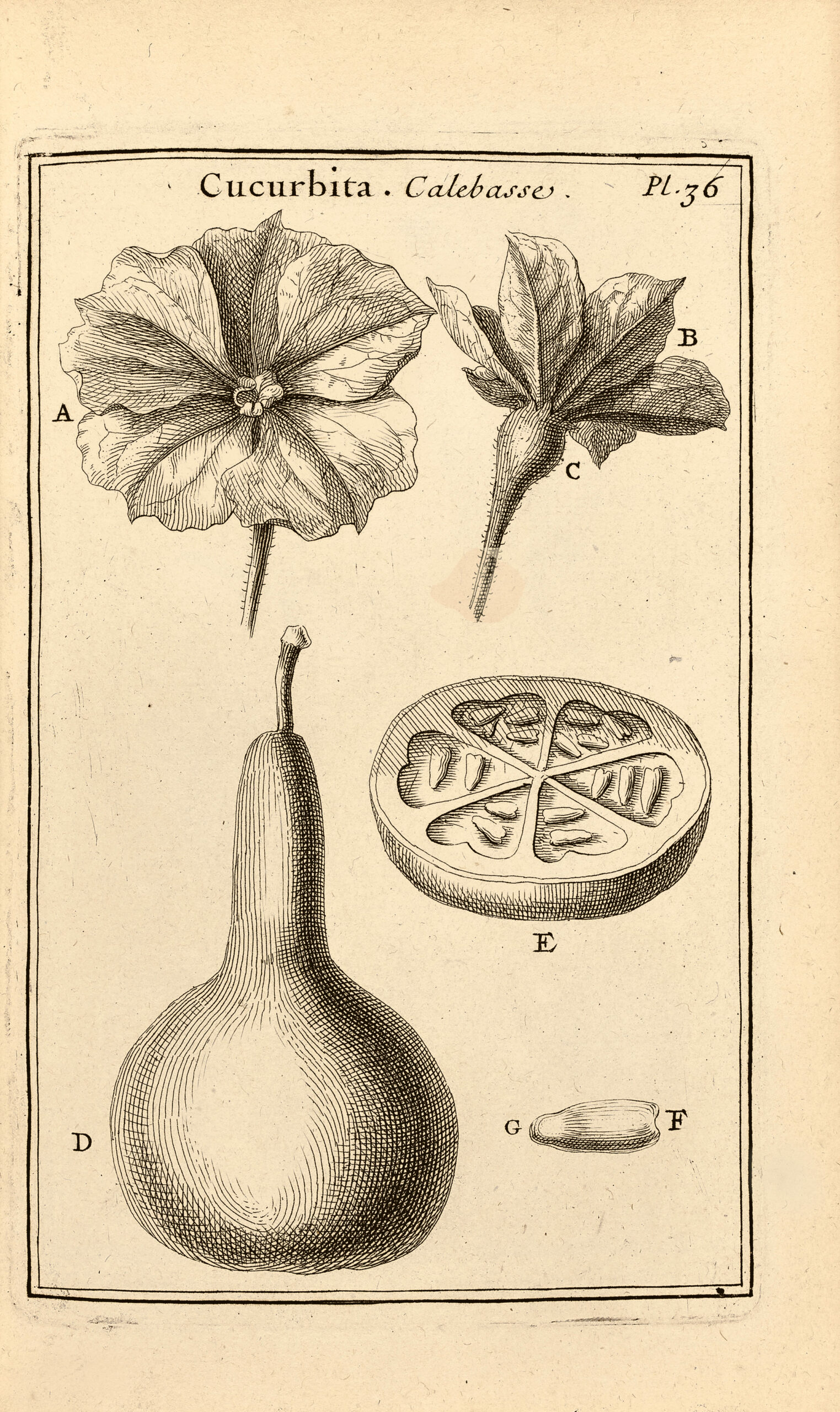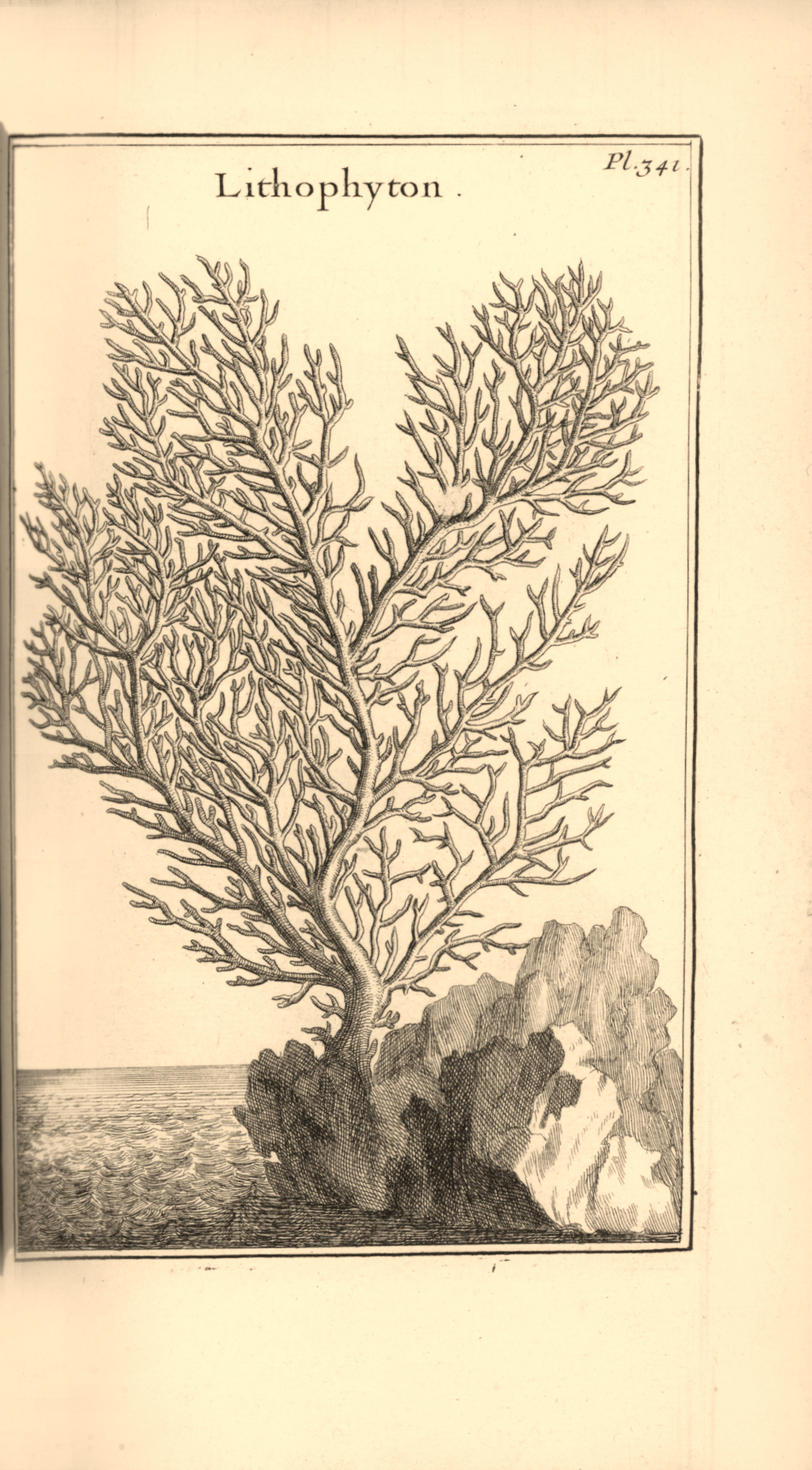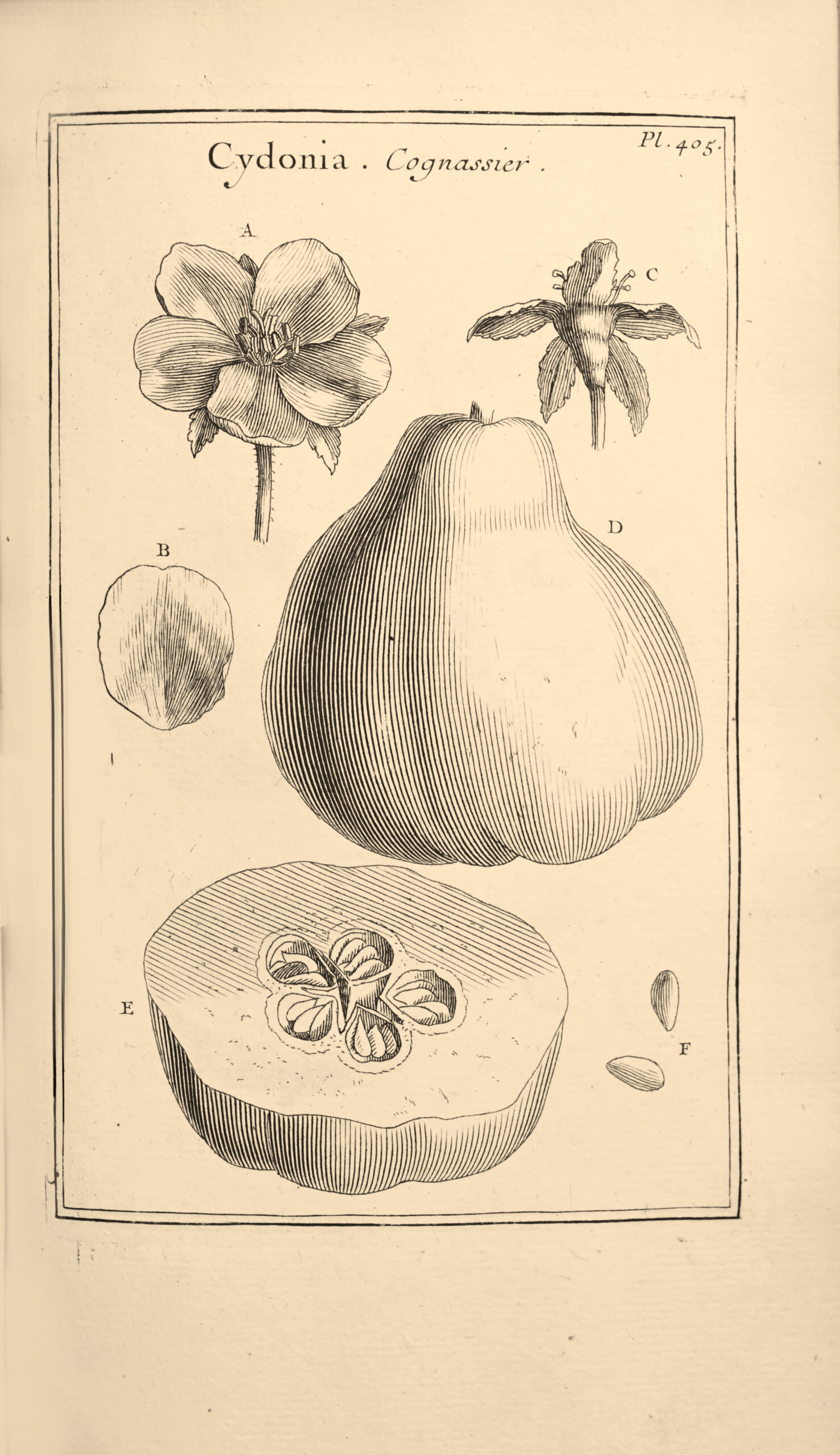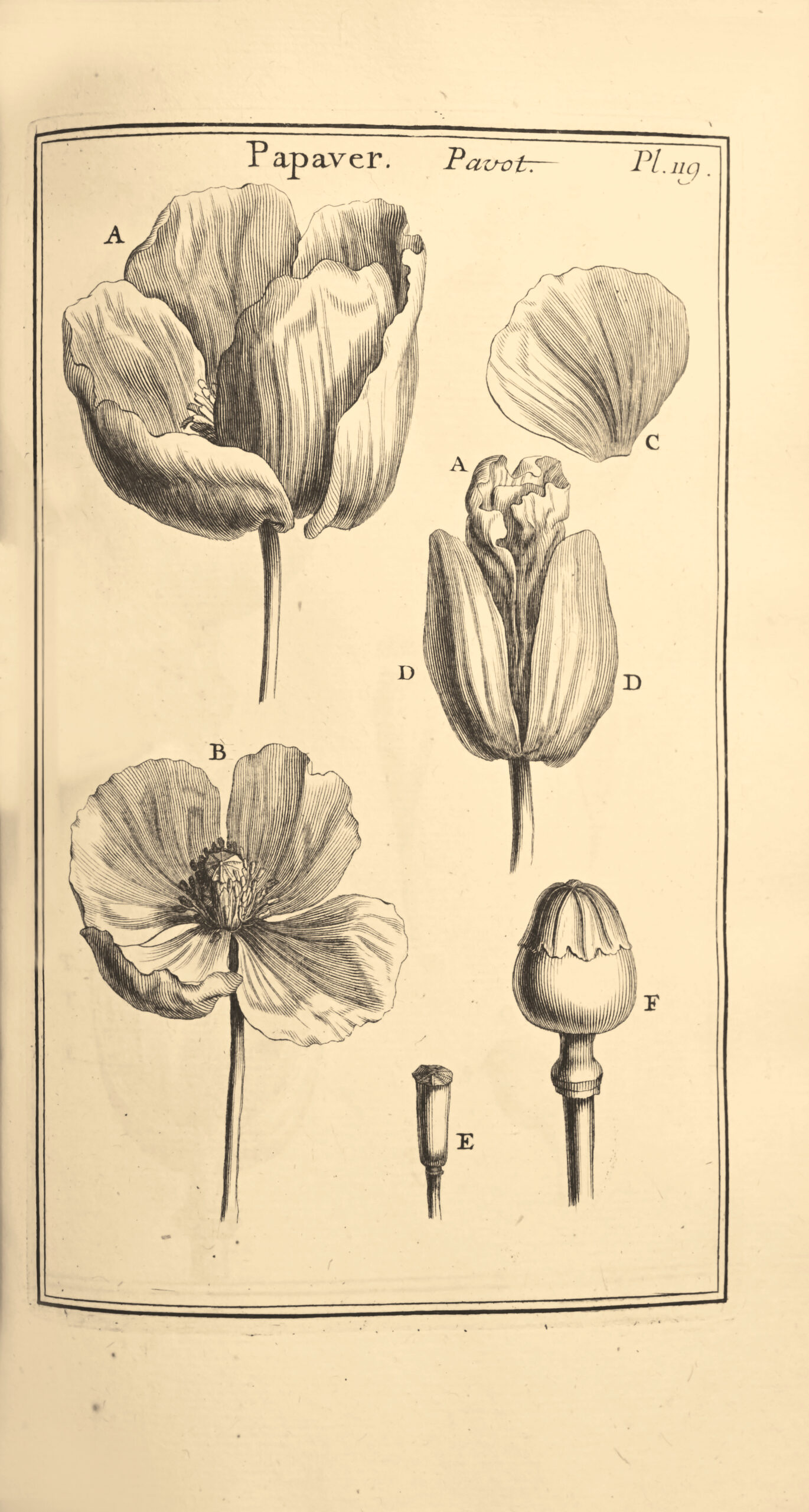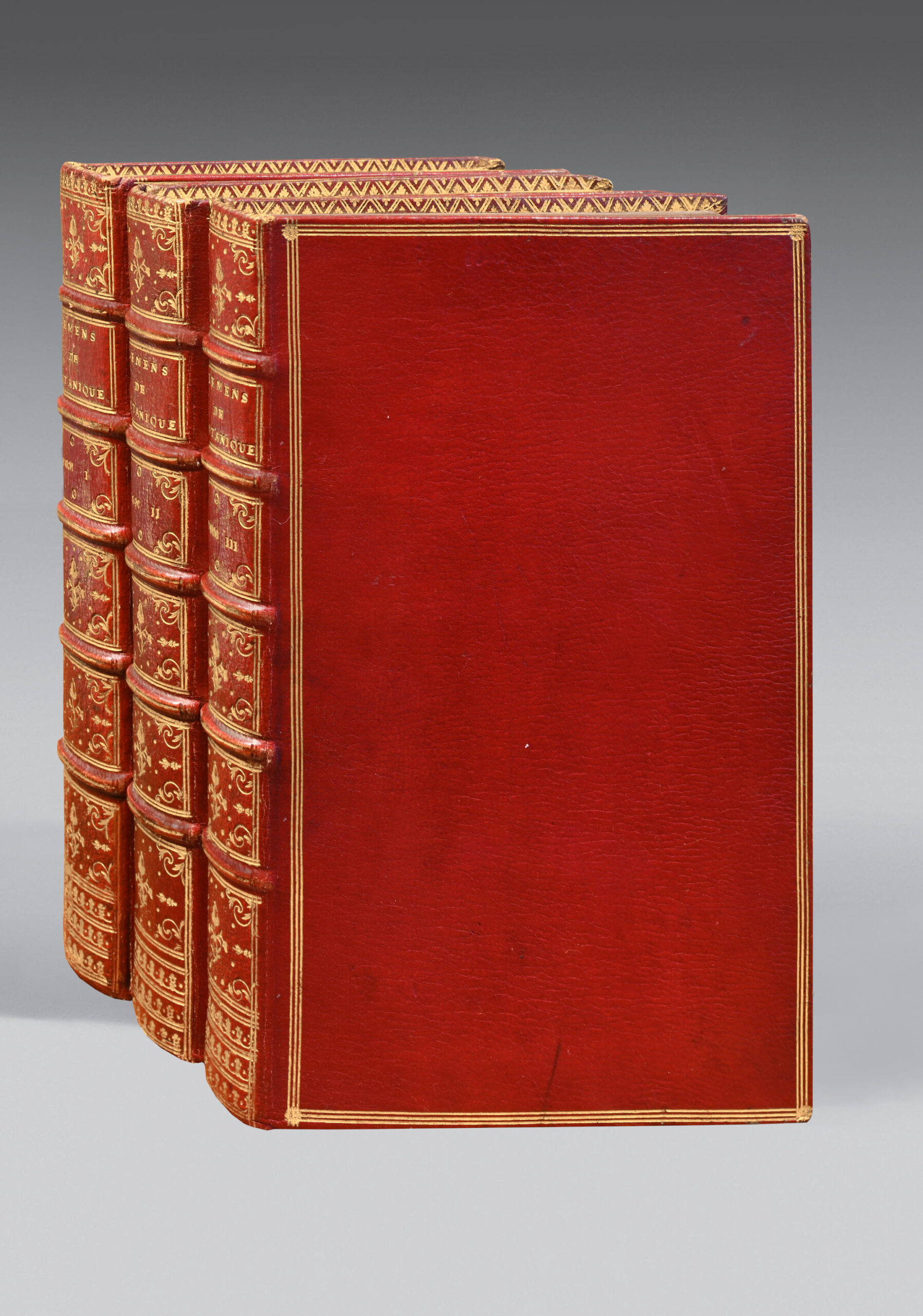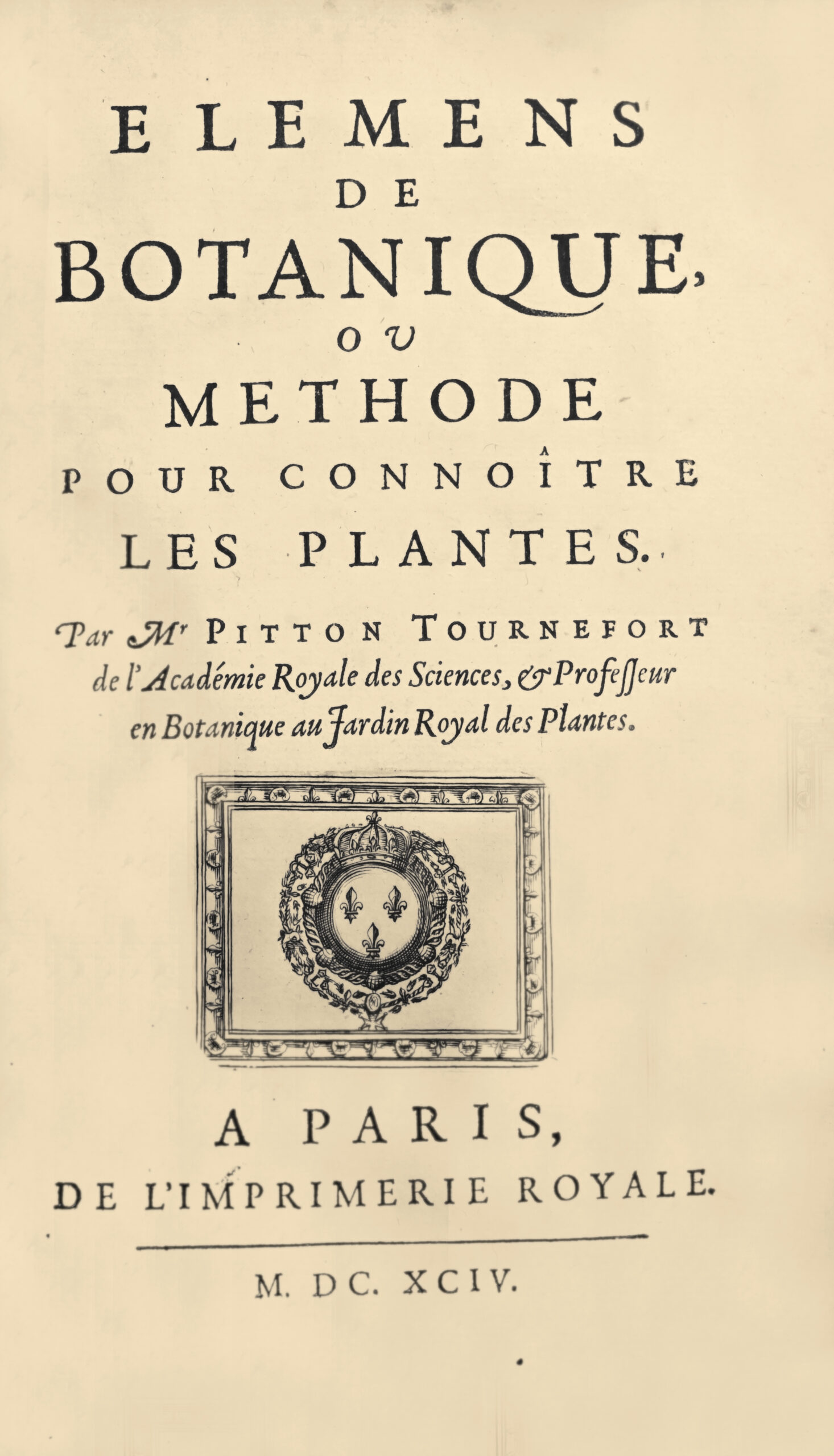À Paris, de l’Imprimerie royale, 1694.
3 volumes 8vo with : I/ 1 engraved frontispiece, (10) ll, 562 pp., (10) ll.; II/ 1 engraved frontispiece, 234 plates; III/ 1 engraved frontispiece, plates 235 to 451. Red morocco, triple gilt fillet around the covers, decorated ribbed spines, gilt inner border, gilt edges. Contemporary binding.
217 x 135 mm.
First edition of the botanical work that founded Tournefort’s reputation, in which he begins to set out his system of classification.
Nissen. Die Botanische buch-illustration, 1976; Pritzel 9423.
The first volume contains: 1° the principles on which he believes classes and genera should be based; 2° the classification of some 10,000 plants according to these principles. The other two volumes contain 451 drawings by Aubriet, the skilled draftsman who accompanied Tournefort on his trip to the Levant. This method was approved by a large number of scientists.
Very important copper-engraved illustration: 3 frontispieces, i.e., the same engraved composition by Cornelus Vermeulen depicting the King’s Garden, repeated three times with different tombstones; 451 plates out of text of botanical representations based on drawings by Claude Aubriet; 5 vignettes in the text, including a garden view.
A painter of animals and flowers, Claude Aubriet (1651-1742) drew the plates for Eléments de botanique (1694) and was appointed painter to the King’s Cabinet and Garden in 1700. He accompanied Tournefort on his trip to Asia Minor (1700-1702), drawing what the naturalist discovered, and also provided plates for Sébastien Vaillant’s Botanicon parisiense (1727).
In the history of botany, still considered at the beginning of the 18th century as an auxiliary science to medicine, Tournefort appears as the creator of a clear and practical method of classification, which enjoyed great success in Europe until Linnaeus. He greatly advanced the notion of genus in botany and, in his time, enjoyed a very high reputation.
“Let’s not forget that the Eléments de botanique were published in French, like the Discours de la méthode, and that this was a considerable innovation. No previous work had achieved the perfection of presenting the sum total of known plants – 700 genera and 9,000 species – in a method that was practically usable by all amateur botanists. All the more so as the iconography of 451 plates by Aubriet was also perfect. It was truly Tournefort’s genius to present an exhaustive classification with admirable simplicity. A classification which, by its very nature and qualities, met a need of the time, a need of social practice in the 17th and early 18th centuries. Tournefort’s thinking was closely linked to the state of development of society: the problem was to identify plants in order to use their virtues.
Tournefort was a scholar worthy of the word in its fullest sense. Let’s not forget that he had read Descartes avidly, and that the philosopher’s influence on him was profound. He constantly endeavored to conduct his thinking in an orderly and autonomous fashion, using reason alone. Contrary to Fontenelle, Tournefort also believed in a pre-established order, in definitively fixed relationships between the essences created by God, which it is up to the understanding to discover. This is the whole problem of “Cartesian freedom”, the foundation of the science Descartes wanted to make. Tournefort posits, on the one hand, the objective reality of the genera and classes that the naturalist discovers and, on the other, since they are knowable, the intelligibility of their relationships.
His concept was that: those who are professionally attached to Medicine and Physics must at least know the plants they prescribe every day, and those that contain phenomena worthy of their attention.
The construction will only be as solid as its foundations. He has made every effort to ensure that they are, albeit at the expense of a flexibility and depth that the genius of a John Ray would paraphrase. It is precisely here, thus enlightened and circumscribed within strict limits, that Tournefort appears to me as the founder of a discipline, Systematics.
With Tournefort, we’re dealing with a kind of erudite sage, whose words are full of simplicity, common sense and enlightened assurance. He wants light, and is satisfied with the criterion of practical success. He is a realist in both the common and philosophical senses of the word. The longevity and fruitfulness of his work also reflect the soundness of his approach. Depending on which aspect of his work is emphasized, judgments will be divided. But no one will dispute that Tournefort was a pure and beautiful figure of the 17th century. Jean-F. Leroy.
Precious and superb copy dedicated to king Louis XIV covered in an elegant red decorated contemporary morocco binding with particularly wide margins (height: 217 mm compared to204 mm for the Barbet copy bound by Chilliat described in our catalog published in 2019).
Provenance : Grégoire, rue du Coq près du Louvre, n° 135 bis (label).
